Sundarban has always been one of the most unexplored and underrated food destinations in Bengal. In fact, the reality is, people go there for tourism and end up having the same food, that they have it in premium restaurants. But it has many culinary secrets- mostly fishy, which needs to be spoken off. And I’ll try to talk on them in this blogpost- the local food of Sundarban.
How to reach sundarban
To reach sundarban, you need to reach Gadkhali via bus. Pleanty options are available from Dharmatala bus terminus. You can also hop on any train to Namkhana and a toto afterwards. Launches are lined up from Gadkhali ferry ghat to take you to your hotel. there is a proper parking place for the private vehicles. You can also check the video here…
Now, out of my multiple trips in Sundarban, this one was typically for exploring local food in Sundarban. And as I started talking to the local people, I came to know about multiple local fish variety, which the local people just love. When the menu was getting prepared, I clearly told them about not serving us any of the common fish variety- like Vetki or Prawns. No, I don’t have anything against them, but I can easily have them in Kolkata and don’t need to travel somewhere for it. And thus my exploration for local food in Sundarban started…
Meals on the boat
Okay, I am known to be a quite fishy person, but even for me, there are quite a few unknown fish species in Sundarban. But first things first… In sundarban, the ideal plan is to take a boat (mini launch) and roam around the numerous canals and waterbodies. They will serve you all the meals on the boat itself. Normally one cook is hired from the local villages and he/ she cooks the meals. Naturally, it’s regular Bengali food and nothing extraordinary. But if you can catch hold of a good cook, life will be different. The regular menu for Breakfast is luchi/ Kachori and Aloo Sabzi+ boiled egg (god knows the reason) and rasogolla- the variety that we get in villages- the solid ones. For snacks (with beer), they’ll get you pakora and fish fry. You just need to choose the fish and life will be different.
Fishy drinks
Aha, I am not really a saint, and naturally, beer during the day time is a staple. But this time, on special request, some Handia was arranged by the hotel management. Now, Handia is made from rice and some fermenting tablets. It’s low on alcohol content and contains close to 20 herbs- to enhance taste. Taste-wise, it’s more like Chhas kept at room temperature- not entirely sweet, and not salty either- a balanced taste.
Amudi is one of the better known fish varieties from Sundarban. And we were served some (a lot, in fact) amudi fry with our evening Handia. It’s basically a soft bone fish, which can be easily chewed. They rub it with basic spices and just deep fry it. The taste is like anchovies, but definitely less pungent. Crab mola was a new revelation for me. Crab meat is taken out and mashed into a smooth paste with mustard oil, burnt tomato, garlic, onion and green chilly. Probably some nigella tempering was there, I am not sure. The taste is strong and brilliant- definitely recommended.
During the day trip on boat, we were served googly kosha. googly is basically snail- the poor man’s meat. It has a high protein content and easily available in the riverside. The texture is slightly chewy and like squid- only sweeter. A nice spicy curry is what is needed.
Local fish from Sundarban
- Kan
- Dantni and
- Molopia
No, I am not uttering words from another planet. There are few of the local fish varieties from Sundarban. And upon special request, there were served to us. The preparations were mostly similar. A jhol/ curry is cooked with (mostly) nigella tempering and lots of green chillies. Garlic is heavily used in all the varieties. Kan and Dantni are single bone sweet water fish. From the cuts, the size of the whole fish must be around 1.5-2 Kgs.
Molopia, on the other hand, was similar to our friendly neighbourhood Tilapia- single bone sweet flesh fish. It would be fascinating to know that reference of Tilapia can be found on ancient Egyptian documentation. However, maybe due to the next-door influence of Bangladeshi cooking style, in almost all the local fish dishes in Sundarban, onion and garlic are used.
These are the local food in Sundarban, consumed by locals. Now, if we visit as tourists and show no interest in their local culture and cuisine, they won’t share their knowledge and that won’t do us any good. My suggestion would be to ask for local food and to enjoy them. Everything may not taste great, but at least, you’ll come back with a new experience. Do taste and let me know your experience.
Bon appetit!!!
I can be reached at indrajit.lahiri@ymail.com

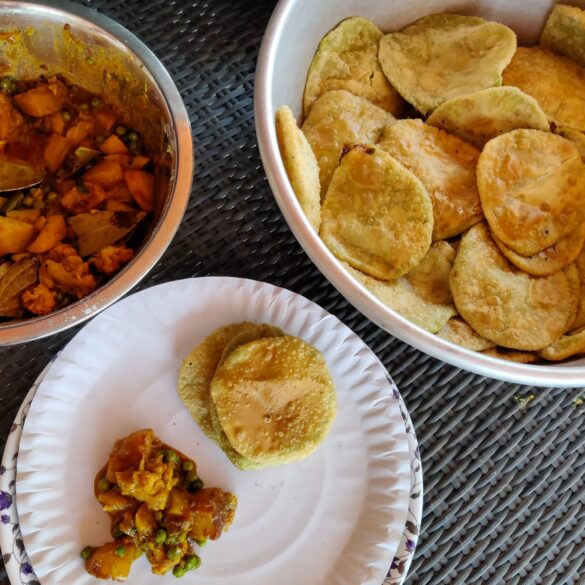
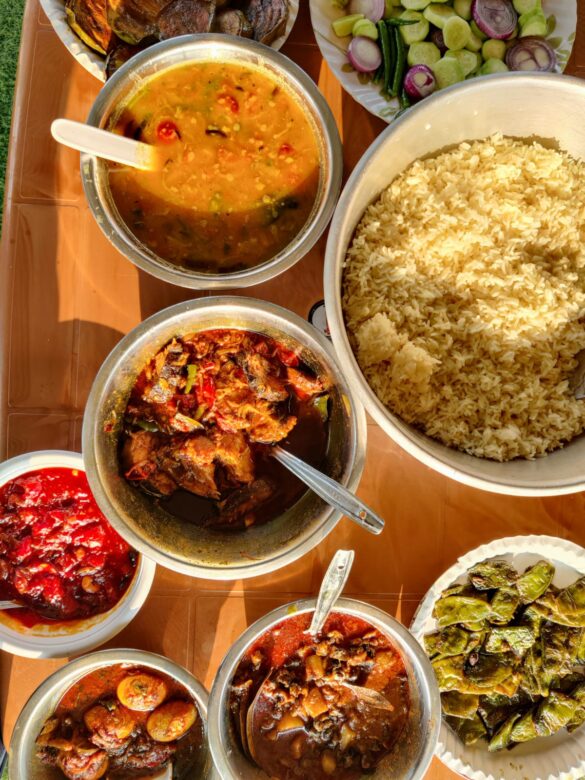
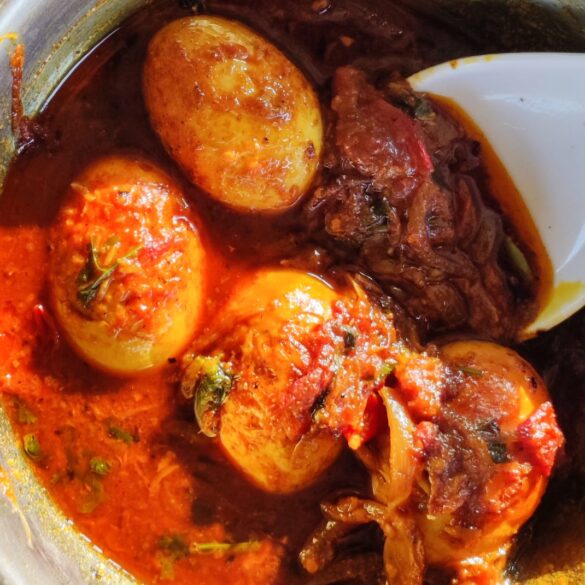

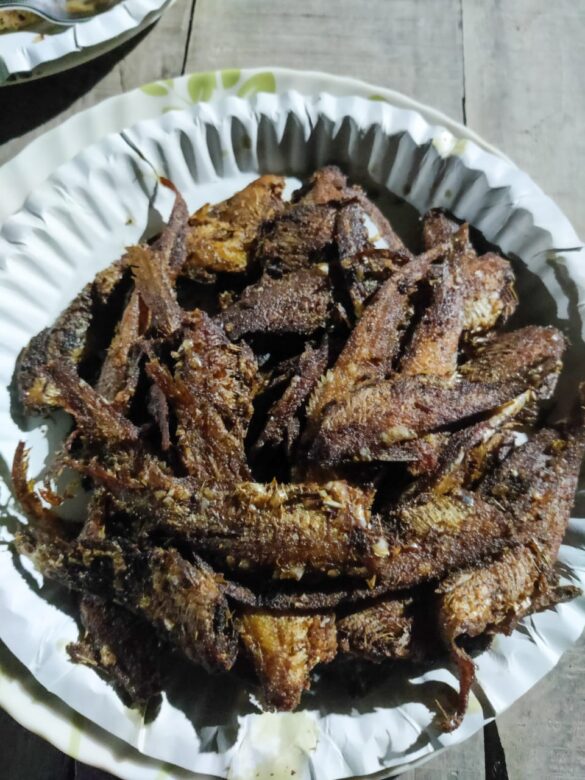
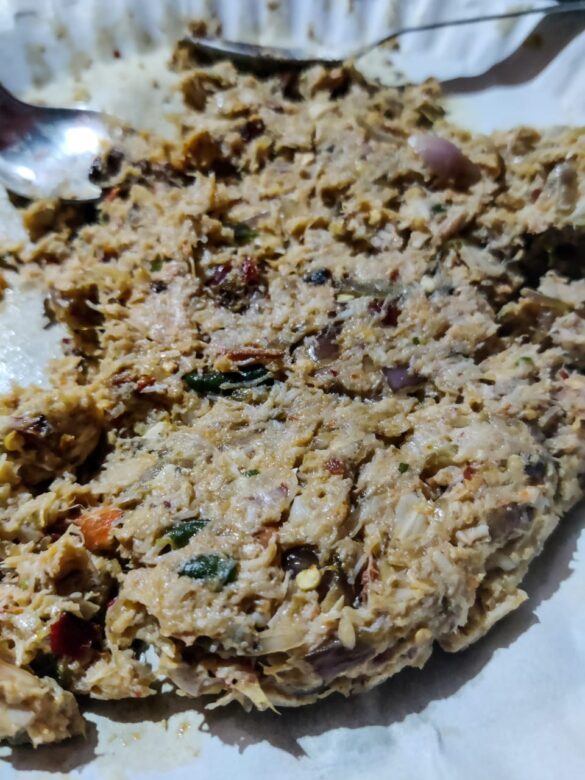
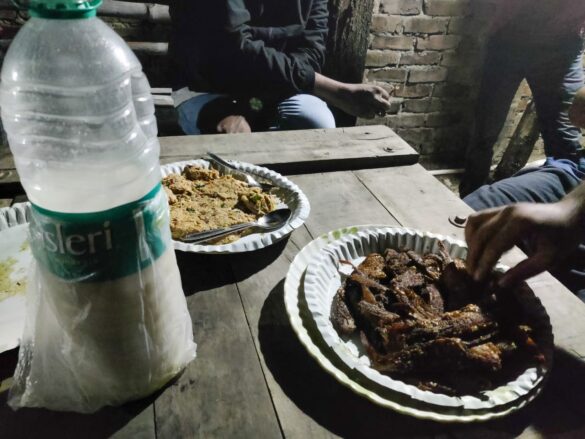

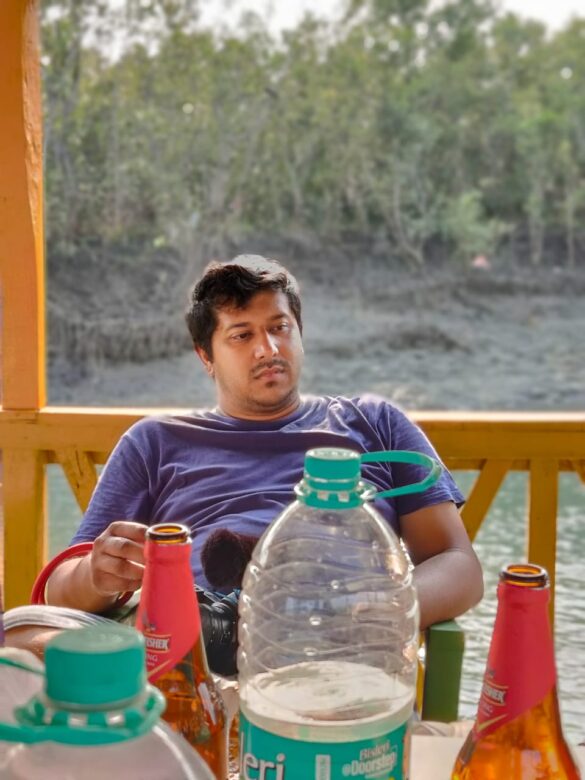
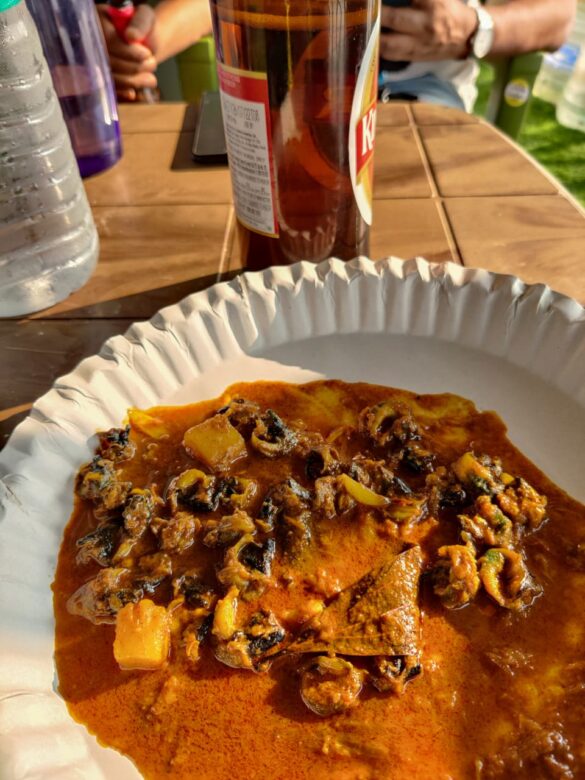
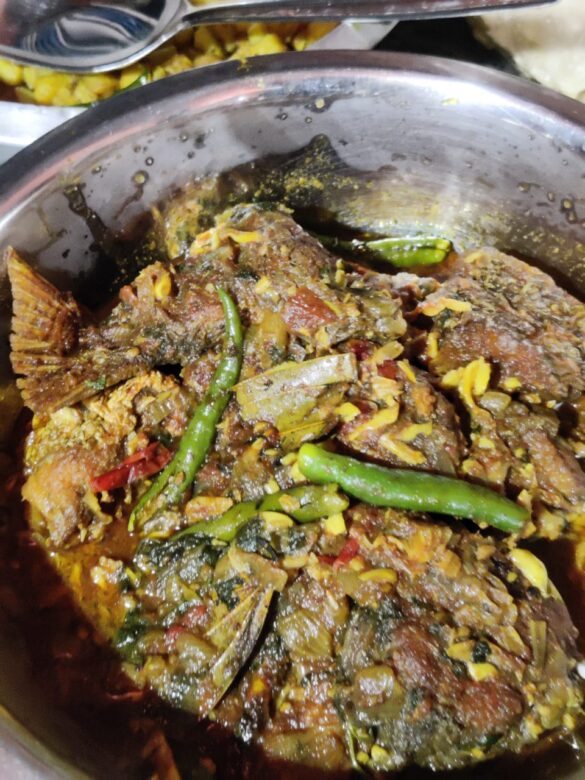
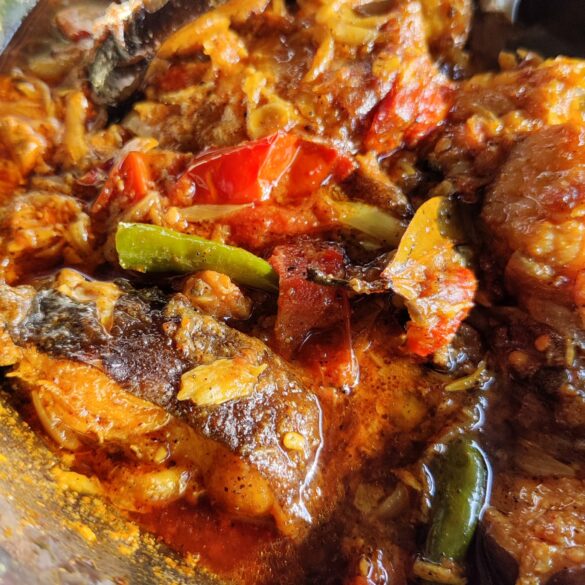
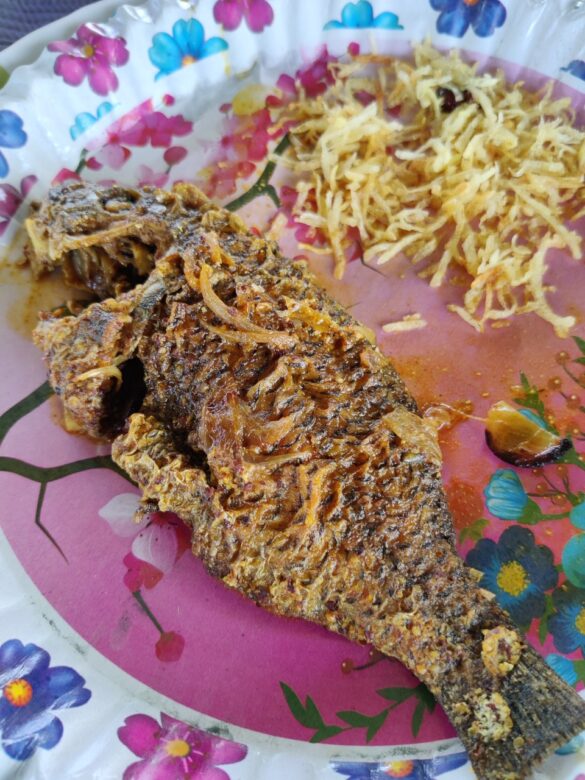
1 comment
[…] These are some of the best street food in Sundarbans trip that you can enjoy. If you want to learn more about the local food and cuisine of Sundarbans, you can check out this blog post: Local food in Sundarban and the variety of honey. […]